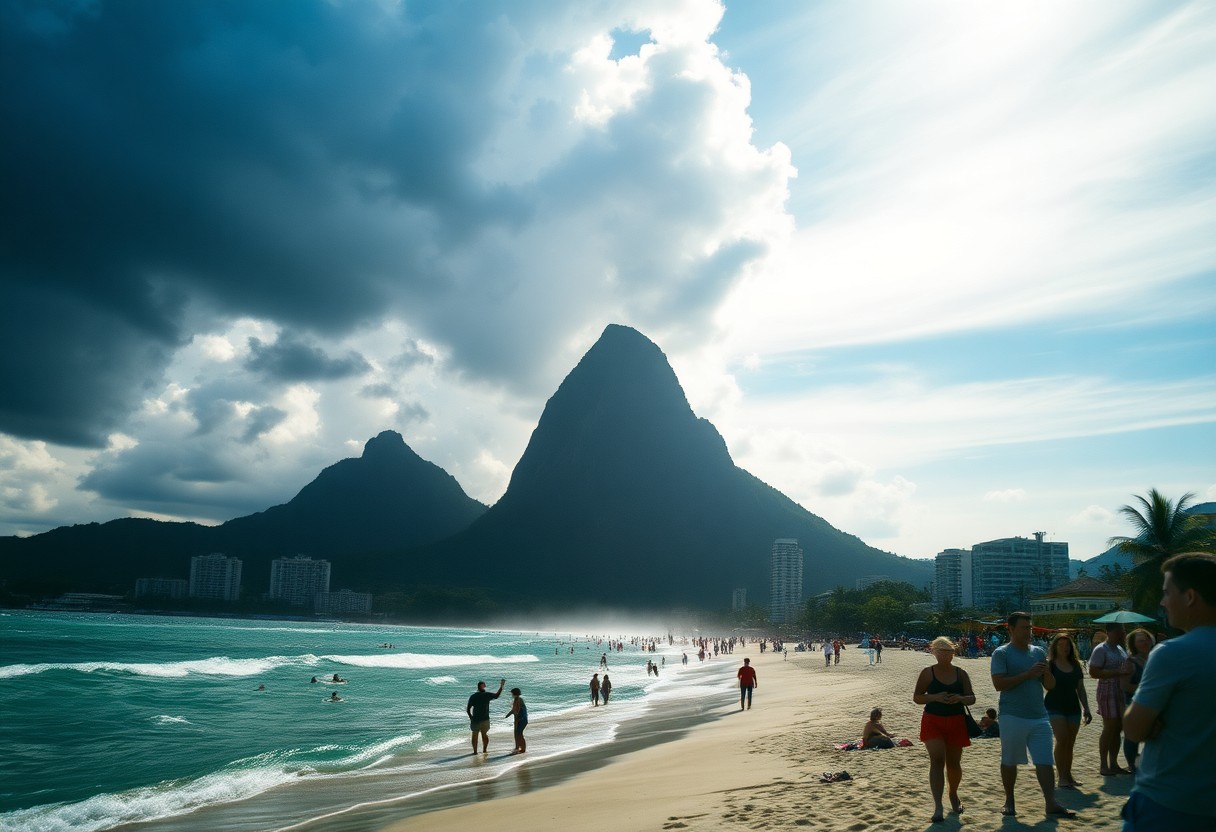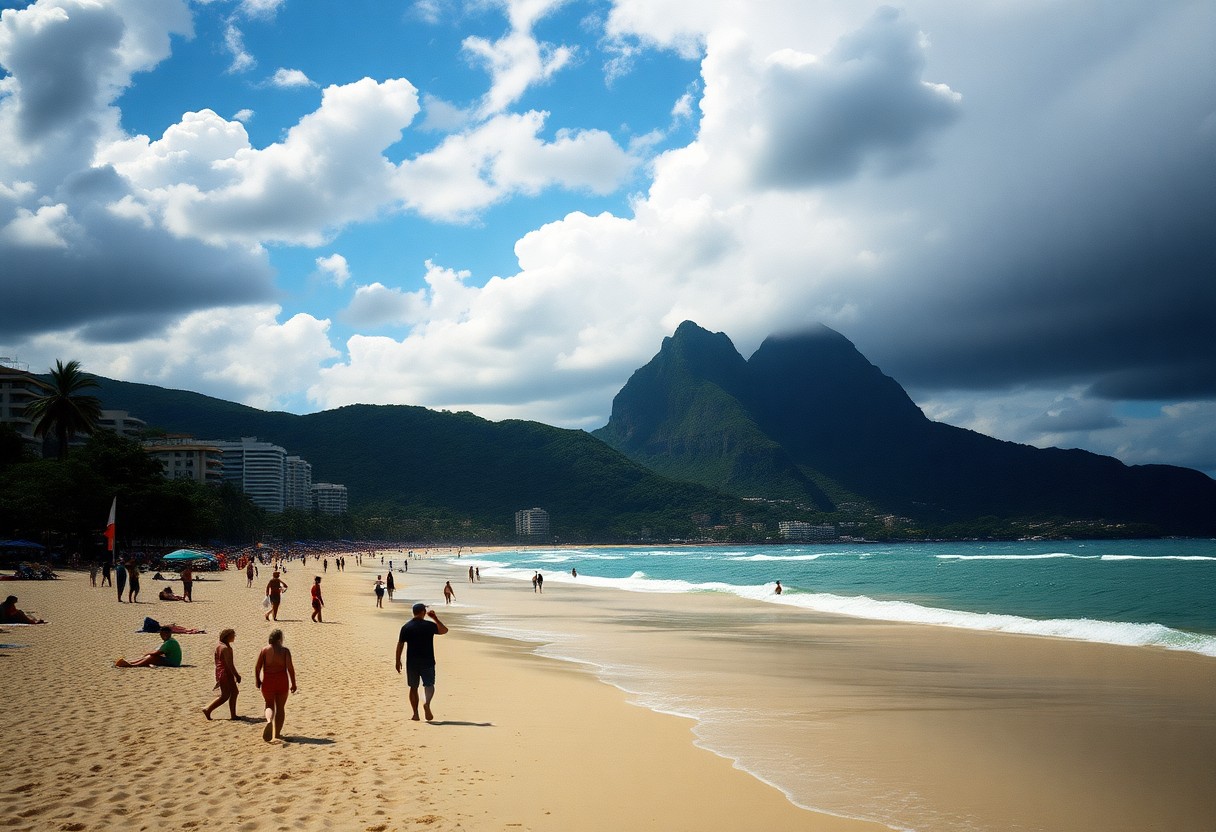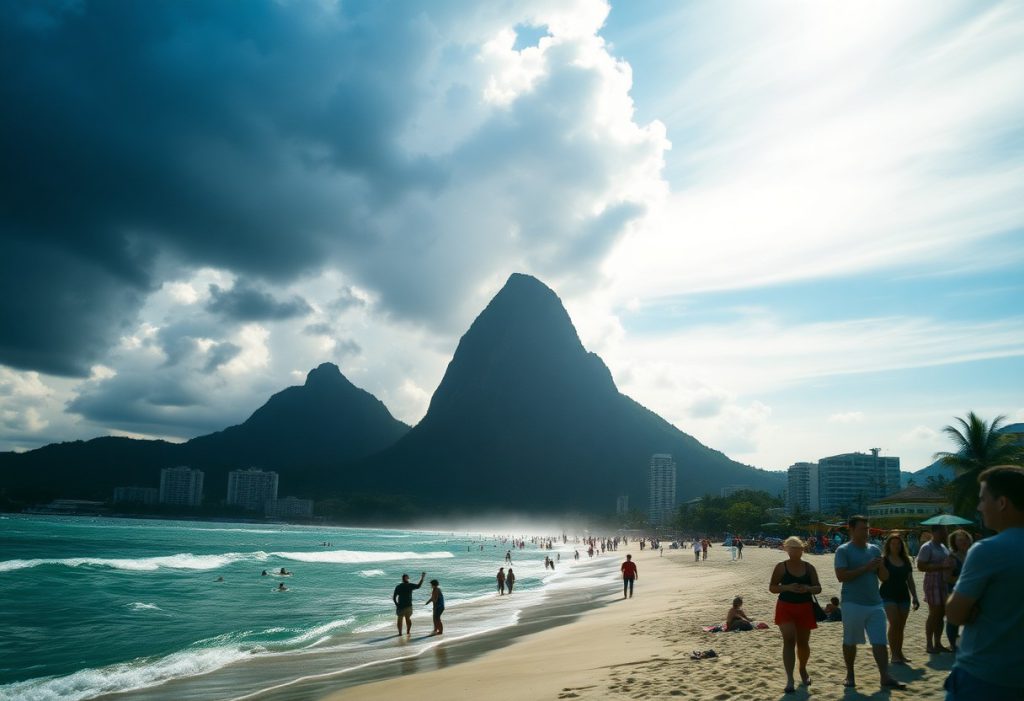As you set out on your exciting journey to Rio de Janeiro, gaining insight into the best times to visit can significantly enrich your overall experience. The city basks in warm temperatures year-round, yet each season reveals distinct traits that can shape your travel choices. The summer months, spanning from December to March, are vibrant with colorful Carnival celebrations, but they also bring heavy rainfall and bustling crowds. Your ideal travel period will primarily depend on your personal preferences: for sunbathing and beach activities, the spring season from September to November is optimal, showcasing mild temperatures and lesser tourist traffic. Conversely, budget travelers might find the winter months (June to August) more financially beneficial. By aligning your travel schedule with the local climate and seasonal festivities, you can enhance your enjoyment during your stay in Rio.
Explore the Distinct Weather Patterns of Rio de Janeiro
Before finalizing your travel plans to Rio de Janeiro, it’s important to understand the city’s tropical climate characteristics. The city enjoys warm temperatures throughout the year, typically fluctuating between 68°F and 88°F (20°C to 31°C). There are two main seasons to consider: a warm and humid summer from December to March, and a milder, drier winter from June to September. Each season offers its own set of advantages and challenges, making it essential to select the right time for your visit based on your planned activities and comfort levels.
In-Depth Seasonal Temperature Analysis for Travelers
| Season | Temperature Range |
|---|---|
| Summer (Dec-Mar) | 77-88°F (25-31°C) |
| Winter (Jun-Sep) | 68-75°F (20-24°C) |
Throughout the year, you can anticipate comfortable temperatures in Rio, with summer months reaching peak heat and winter providing milder conditions ideal for outdoor adventures. Understanding these temperature fluctuations is crucial for effectively planning your activities and ensuring a pleasurable experience while exploring all that the city has to offer.
Essential Considerations for Rainfall and Humidity in Rio
When arranging your trip to Rio, it’s vital to take the city’s rainfall patterns into consideration. Here are some significant factors to keep in mind:
- Rainy season: December to March
- Average annual rainfall: 44 inches
- Peak humidity levels: 80% during summer months
- Driest months: June to August
The humidity levels in Rio can greatly influence your comfort while you explore the city. Here are a few noteworthy points to consider:
- Morning fog may hinder visibility at popular tourist attractions
- Refreshing coastal breezes offer relief from high humidity
- Evening humidity tends to rise near the beaches
- Air conditioning is commonly available in most accommodations

Experience the Thriving Culture During Rio’s Peak Season (December-March)
If your travel plans coincide with Rio’s peak season, prepare for intense heat and exhilarating celebrations. This period aligns with major events such as New Year’s Eve festivities and the famous Carnival. It’s crucial to book your accommodations well in advance, as hotels fill up quickly during these vibrant months. Immerse yourself in the lively atmosphere, but also be ready to face the challenges that accompany it.
Weather and Event Highlights During Peak Season
During these summer months, expect a mix of sunshine and rain, with temperatures soaring up to 40°C (104°F). Frequent afternoon showers are common, especially in December and January, contributing to heightened humidity levels that can make it feel even warmer. This season is marked by major festivals and energetic celebrations, creating an electrifying ambiance that resonates throughout the city.
Weighing the Advantages and Disadvantages of Summer Travel
| Pros | Cons |
|---|---|
| Dynamic festival atmosphere | Overcrowded beaches |
| Ideal beach weather | Higher humidity levels |
| Exciting events and celebrations | Increased accommodation prices |
| Vibrant nightlife options | Longer wait times at attractions |
| Excellent swimming conditions | Afternoon rain showers |
With this knowledge, you can approach your peak season visit with a clearer understanding of what to expect. While the experience is undeniably lively and energetic, managing crowds and expenses is crucial for a fulfilling trip. Moreover, planning ahead is essential; aim to book your flights and accommodations at least 3-4 months in advance, particularly if you wish to participate in the Carnival festivities. To maximize your time, consider starting your daily excursions early to avoid the harshest sun and longest queues.
Optimize Your Visit During the Shoulder Season (April-May)
The shoulder season offers a perfect balance between Rio’s peak and low seasons. During these months, you can enjoy pleasant temperatures averaging 75°F (24°C), paired with fewer tourists, creating an ideal setting for exploring the city’s diverse attractions. This period is particularly attractive for those who desire a more laid-back experience without the overwhelming crowds of summer.
Climate Characteristics During the Shoulder Season
While experiencing the shoulder season, you’ll encounter mild and comfortable weather in Rio de Janeiro. Compared to the summer months, there are fewer rainy days, with only occasional light showers. The humidity levels drop significantly, making outdoor activities much more enjoyable. The ocean temperature remains inviting for swimming, hovering around 73°F (23°C), allowing you to engage in beach activities with ease.
Financial Benefits and Travel Considerations in Shoulder Season
For budget travelers, the months of April and May provide excellent opportunities for savings. You’ll find that hotel rates can be up to 30% lower than during the peak season, and shorter wait times at popular attractions like Christ the Redeemer and Sugarloaf Mountain will enhance your experience. The shoulder season is an ideal time to relish the balance of favorable weather and accessibility.
The mild climate not only allows for beach activities without large crowds but also sets a comfortable backdrop for exploring outdoor markets and taking advantage of discounted prices on tours and activities. The pleasant weather creates an inviting atmosphere for hiking in Tijuca National Park or participating in walking tours through Rio’s historic neighborhoods.

Uncover the Unique Appeal of Rio’s Winter Months (June-September)
Rio’s winter months bring a refreshing change, featuring pleasant temperatures ranging from 18-25°C (64-77°F). This season is characterized by lower rainfall and humidity, making it perfect for various outdoor activities. While beach activities may occur less frequently, you will find fewer tourists and more attractive hotel rates, allowing for a distinct experience in the city.
Overview of Winter Temperature and Weather Patterns
| Feature | Description |
|---|---|
| Average Temperature | 18-25°C (64-77°F) |
| Rainfall | Minimal |
| Humidity | Lower than summer |
| Sunshine Hours | 6-7 hours daily |
During winter, minimal rainfall occurs, allowing for clear views of Christ the Redeemer and Sugarloaf Mountain. You’ll experience stable weather patterns with plenty of sunny days, making it an excellent time for sightseeing and outdoor exploration.
Engaging Activities and Advantages for Tourists in Winter
Winter presents some of the best opportunities for sightseeing in Rio. You can expect shorter lines at major attractions and enjoy comfortable hiking in Tijuca National Park, allowing you to immerse yourself in the stunning natural beauty of the area. This season is also perfect for urban exploration and photography, as you can enjoy lower accommodation costs while experiencing more authentic local culture with fewer tourists around.
Your outdoor adventures will be less affected by rain, allowing for a more leisurely exploration of the city. With fewer crowds, it becomes easier to secure reservations at popular restaurants and book tours. Overall, winter in Rio offers a unique combination of delightful weather and enriching experiences.
Revel in the Charm of Rio During Springtime (October-November)
Springtime in Rio ushers in a delightful change, offering a blend of mild temperatures and reduced tourist crowds. Visiting during these months provides an excellent chance to explore the city’s attractions without the summer rush. Beaches become increasingly appealing as temperatures average around 77°F (25°C), and access to iconic landmarks in the city becomes more manageable.
Understanding Spring Weather Conditions
As spring unfolds, pleasant temperatures prevail, although occasional rain showers may still occur. Humidity levels remain moderate, ensuring that outdoor activities are comfortable and enjoyable. These weather conditions create a perfect setting for beach enjoyment and city exploration, with clearer skies offering stunning views of Christ the Redeemer.
Cost Advantages and Travel Benefits in Spring
This season presents significant benefits for budget-conscious travelers, as lower accommodation rates and flight prices are common. You will notice:
- Hotel prices dropping by 20-30%
- Significant reductions in flight costs
- Shorter lines at major attractions
- Better availability for restaurant bookings
As tourism gradually ramps up following the winter months, prices remain competitive, making spring an ideal time for travel.
Your visit during this season allows for flexible planning, thanks to these enticing benefits:
- Access to last-minute bookings without inflated prices
- Options for upgraded accommodations at standard rates
- Special deals on guided tours
- More personalized attention at restaurants and attractions
After evaluating all four seasons, spring emerges as a smart choice for travelers seeking value and unforgettable experiences.

Strategic Travel Planning Tips for an Unforgettable Experience in Rio de Janeiro
While Rio de Janeiro possesses year-round charm, meticulous planning is essential to ensure a smooth and enjoyable experience. Always pack light and breathable clothing, along with adequate sun protection, regardless of the season. Additionally, ensure your travel insurance covers medical emergencies and theft. The safest areas for tourists typically include Copacabana, Ipanema, and Leblon, where you can feel secure while exploring. A combination of guided tours and independent exploration is often the best way to fully experience the city.
Optimal Duration for a Memorable Stay in Rio
A stay of at least 5-7 days is recommended to fully experience the main attractions of Rio de Janeiro. This timeframe allows you to dedicate two days to iconic landmarks like Christ the Redeemer and Sugarloaf Mountain, two days for beach relaxation, and one day for cultural exploration and local discoveries. The remaining time can be reserved for spontaneous adventures or day trips to nearby attractions, enriching your overall experience.
Budget-Savvy Tips for Your Rio Adventure
Your average daily budget in Rio may range from $50-200, depending on your travel style and preferences. The most significant expenses typically involve accommodation and activities. If you travel during the low season (March-November), you can save up to 40% on hotels and flights, making this a fantastic time to visit.
To maximize your savings, consider these essential tips: book accommodations well in advance, utilize public transportation whenever possible, dine at local eateries rather than tourist-centric restaurants, and invest in a Rio Pass for discounted access to attractions. Look for package deals during the shoulder season, and consider staying in neighborhoods like Flamengo or Botafogo for more affordable rates.
- Always keep small bills handy for local vendors
- Use reputable taxi apps for safe transportation
- Pre-book major attractions online to bypass long lines
- Secure your valuables in your hotel safe
Valuable Insights for the Discerning Traveler
Rio de Janeiro is a destination that offers year-round allure, with each season providing unique experiences. The city is most vibrant from December to March, when temperatures peak at 82°F (28°C) and iconic events like Carnival bring life to the streets. While the summer months can present higher prices and larger crowds, they also offer an unparalleled chance to immerse yourself in Rio’s rich culture. If you prefer a quieter visit, consider planning your trip during April-May or October-November, when you can enjoy pleasant weather and lower rates. Be sure to book your accommodations early during peak season and stay aware of the potential for heavy rainfall and flooding risks during the summer months.
Commonly Asked Questions About Visiting Rio de Janeiro
Q: Which months are best for visiting Rio de Janeiro with favorable weather and fewer tourists?
A: The months of April and May are the most favorable for a visit to Rio. During this period, the weather is warm at around 75°F (24°C), with less rain and fewer tourists, allowing for clear views of Christ the Redeemer and Sugarloaf Mountain, in addition to better hotel rates. The beaches remain inviting for swimming, and you can explore the city’s attractions without the overwhelming crowds.
Q: When is it advisable to avoid traveling to Rio de Janeiro?
A: The months from December to March can be challenging due to daily temperatures soaring to 95°F (35°C) along with frequent heavy rains. These months also attract the largest influx of tourists and the highest prices, especially during Carnival in February. The combination of excessive heat, high humidity, and rainfall can detract from the enjoyment of outdoor activities, with hotel rates often increasing by 50-200% during this peak season.
Q: What weather conditions and events should I prepare for during Rio’s Carnival season?
A: Carnival season, which occurs from February to March, brings soaring temperatures ranging from 85-95°F (29-35°C), along with the likelihood of afternoon rain showers. It’s advisable to book hotels at least six months in advance, as prices can triple during this busy period. The main parade lasts for five days, accompanied by street parties that start early in the morning. Ensure you pack lightweight clothing, rain gear, and sun protection. Staying near Copacabana or Ipanema beaches will provide easy access to events and transportation options.
The Article: Best and worst times to visit Rio de Janeiro weather events and travel tips appeared first on https://rentacar24.org/
The Article Best and Worst Times to Visit Rio de Janeiro: Travel Tips and Weather Was Found On https://limitsofstrategy.com



I love how you broke down the seasons in Rio—it’s like finding the perfect beachside cocktail! I once went during the summer, hoping to soak up the Carnival vibes. Let’s just say, I got more rain showers than sunshine and a free lesson in dancing through puddles!
It sounds like you had quite the experience during your summer in Rio! Rain showers can definitely throw a wrench in your plans, but dancing through puddles seems like a creative way to embrace the moment. I’ve heard Carnival can be a magical time, but it’s funny how unpredictable the weather can be.
Catching those Carnival vibes can feel like chasing a mirage sometimes, right? Summer in Rio can be a real rollercoaster. Picture yourself juggling that bright, festive energy while dodging raindrops—it’s like trying to dance a samba on a muddy dance floor, isn’t it? And as you learned, the weather can be as unpredictable as an impromptu bloco parading down the street.
Braving the rain showers during Carnival adds a unique twist to the experience, doesn’t it? It’s all about rolling with what you get in Rio. Those unexpected moments can turn into some of the best stories. Dancing through puddles sounds like a pretty fun memory, even if it wasn’t the sunshine you were hoping for.